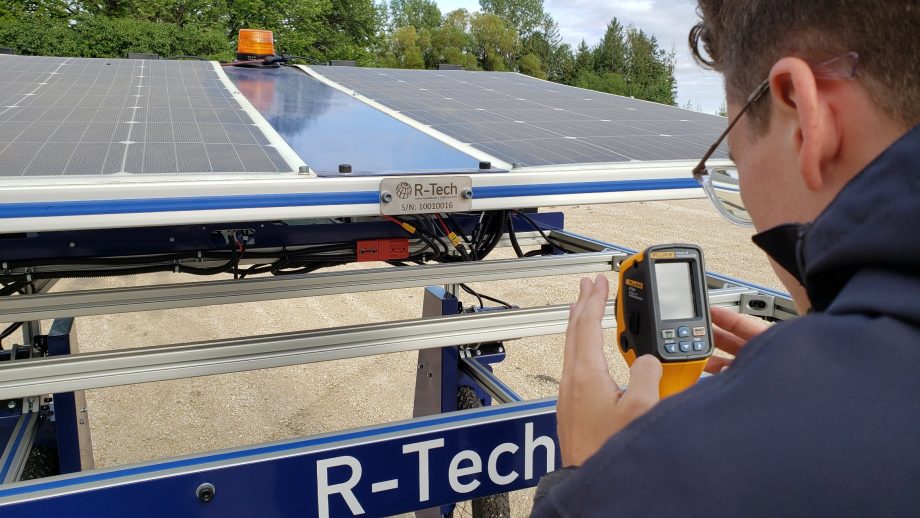University of Winnipeg professorSimon Liaoworks closely with his graduate students and community partners to conduct research that inspires discovery and aids society.
This includes theoretical research on how to apply image recognition in real-time to hands-on research such as using the pulse from a person’s finger to diagnose cardiovascular disease, helping hospitals improve flu prediction accuracy, and developing systems to monitor and improve emergency room wait times.
这些研究项目使我们能够使用AI来解决实际问题,这是计算机科学专业的重要组成部分。
西蒙廖博士
When Liao arrived at UWinnipeg’s applied computer science department 27 years ago, artificial intelligence (AI) research was not as well-known as it is today. As computer activity has increased, so has the ability to take this research to a new level – and though the focus is on the capacity of computers, Liao is quick to point out that this capacity still relies on people.
“With AI, the computer’s intelligence is artificial but the intelligence comes from people,” he said. “You teach the computer to think. After this, the computer can think faster and better than you.”
使用AI技术,可以将系统设置在适当的位置,以使医院工作人员能够解释症状,从而减少急诊室医生的压力。Liao的两名硕士学生Jeifu Pei和Bo Ling有机会与七Oaks综合医院的员工合作,旨在更准确地预测流感疫情。几年后,Ling进行了第二个研究项目,该项目分析了候车室时间以提高服务质量,并帮助医务人员更有效地分配资源。
就在最近,一份研究报告t Liao worked on with Master’s student Marcel Nwali was accepted byPattern Recognition,one of the top academic journals in computer vision and pattern recognition.
“It’s very hard for a Master’s student to reach this level,” said Liao. “I am so proud of him.”
Nwali worked with Liao to develop a new method of computing digital image moments accurately without sacrificing efficiency. The moments of a digital image capture its unique properties and capabilities. Different types of image moments have been widely studied and applied in image analysis and recognition.
“Understandably, computing accuracy and efficiency are always against each other,” said Liao. “In Marcel’s research, we developed a method to resolve these two issues, and found a possible solution to apply moment-based image recognition in real-time. These solutions can certainly provide an impact for applications in the field of computer vision, which is an important part of AI.”
While the nature of some research is strictly theoretical, Liao tries whenever possible to incorporate practical community needs.
“We always try to find a way to help society,” he said.
他指出了一个将古老的中药智慧与现代AI技术平衡的项目。
Master’s student Zhaopeng Fan, along with Liao and adjunct professor Michael Gong Zhang, worked together to invent a non-invasive infrared sensor that measures pulse waves in a person’s finger to diagnose cardiovascular disease.
Liao说:“脉搏是一个非常重要的信号,是中药最重要的部分之一。”“如果您心脏病发作,而您不记得或不知道,您的手指就会说明。”
As part of his Master’s thesis, Fan travelled to China to collect pulse wave data from patients at Shandong Provincial Hospital.
A few years later, Master’s student Jingjing Xia followed up on Fan’s research with a study of correlations in the data, looking for ways to make it easier for medical professionals to accurately diagnose cardiovascular disease.
“UWinnipeg trained me for problem solving, critical thinking and data analysis,” said Fan, who graduated in 2011. “This prepared me to work as a data analyst in healthcare where I provide decision support to the regional health authority so the right care can be provided to my community.”
Fan came to UWinnipeg with an interest in medical research and IT. He is thrilled to work in a field where he can use his IT skills to make a difference in public healthcare.
Being able to take part in cutting edge research is crucial to students as they prepare for careers in computer science.
“My research philosophy is quite practical,” said Liao. “I want to prepare my students for a career. These research projects allow us to use AI to solve practical problems which is an important part of the computer science profession.”




